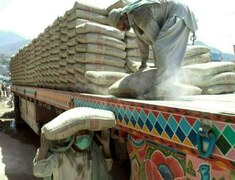According to news in Indian media, on September 11, Pakistan’s forever frenemy neighbour applied for exclusive Geographical Indications (GI) tagging for basmati rice in the European Union’s official registry of Council on Quality Schemes for Agricultural Products and Food Stuffs. According to EU’s rules of business, any competing trading nation has up to three months’ notice to contest the claim from the date of its publication.
The news comes as a bombshell for Pakistan’s rice exporters as well as its Commerce policy czars, who for the past two years have been banking on EU’s revised regulations on fungicide acceptability levels in food products. Background discussions at the time had indicated that basmati rice originating from India has higher tricylazole levels, a chemical spray heavily used on paddy crop to fight fungal pests. As a result, Indian exporters began to find it hard to maintain market share, leaving open field for Pakistani exporters. Between FY17 – FY20, total volume of Pakistan’s basmati exports increased by nearly 1.90 times – often misattributed to improved competitiveness due to currency devaluation.
It is not as if the policymakers had not seen this coming. In March earlier this year, federal government promulgated the Geographical Indications (Registration and Protection) Act 2020, allowing Pakistan to also claim right to unique geographical origin for its products, aimed to counter a long-awaited attack from the neighbour on country’s export destinations.
But like most Pakistani things, the country moved at a snail’s pace in operationalizing the law, which as per sources at Rice Exporters Association of Pakistan (REAP) had remained dormant at least until end of August. In MoC’s defence, the pandemic hit during the intervening months, both slowing down country’s exports – and, possibly leading it to lower its diplomatic guard. Afterall, nobody expects a neighbour – even the unfriendly ones – to strike at a time of global tragedy.

Now that the enemy is at the gates, what will it take to operationalize the law? Consider that India enacted its Geographical Indications of Goods (Registration and Protection) Act, 1999 at the turn of the century, anticipating increased competition to its rice exports in the aftermath of trade liberalization under TRIPS and WTO. Yet, it has taken two decades for the country to demand an exclusive right from the EU, which begs the question whether Pakistan would prove to be the long-eared bunny in this tale of the tortoise and the hare.
But why did it take India so long? India’s story of addressing competing claims of GI origin of its basmati producing region deserves some context. Despite producing up to 7.5 million tons of basmati-claimant rice varieties per annum across the country, India assigns GI tagging to basmati originating only in the states of Punjab, Haryana, Himachal Pradesh, Uttarakhand, Delhi, western Uttar Pradesh and select districts of Jammu and Kashmir.
Despite protracted court battles, the central government of India has resisted temptation to assign basmati tagging to crop originating in the semi-agrarian state of Madhya Pradesh (central India), as historically it has not been considered contiguous with the basmati producing north-western subcontinent – the region stretching between Indus and Ganges-Yamuna rivers.
According to official communication between the CM of (Indian) Punjab and the central government earlier this year, “proliferation of GI tags to any more state will dilute the market value of basmati rice and harm the interest of exporters”. This has hurt India’s ability to grow the quantum of its rice export, which have been stuck under 4.5 million tons for several years, even before the EU revised its regulations on fungicide use had come into force.
It takes no rocket scientist to figure out that the distinctions maintained by Indian central government even within the country buttresses its claim for exclusive rights to basmati’s GI tagging, indicating that the country’s export policymakers take the geographical origin business seriously.
In sharp contrast, Pakistan so far lacks any geographical jurisdiction for its ‘true basmati’. Although the basmati bowl has traditionally been associated with the north-eastern districts of Punjab stretching from Narowal, Sialkot, Gujrat, Gujranwala, and Hafizabad, the Lahore and Gujranwala divisions belt is no longer the only top basmati producing region in the province.
According to several unofficial definitions discovered by BR Research in background stakeholder discussions, the government of Punjab (Pakistan) includes as many as 18 districts of the province in the “basmati belt”. Also consider that central and southern Punjab regions such as Okara, Bahawalnagar, Pakpattan, Jhang and Toba Tek Singh are among the top 10 producers of basmati rice in the country, far ahead of traditional basmati districts such as Gujrat, Kasur, and Lahore. Never mind also that over the past decade, basmati has made inroads all the way into Sindh and even Balochistan provinces, risking whatever exclusivity that the variety could have claimed, if any.
In the less than 10 weeks now available to Pakistan to contest Indian claim, the country needs to urgently develop rules to geographically demarcate regions with rightful basmati origins. In order to maintain the authenticity of its claim, it will need to exclude some regions to the benefit of the others. That will lead to a lot of protracted regional politics, an art Pakistani policymakers have often lacked. The second – and the much more difficult - challenge will then follow: to prove to EU that Pakistan has the requisite infrastructure to maintain exclusivity of its basmati sourcing from the true basmati regions.
Pakistan’s rice exporters have a nervous two months ahead of them. It will take all the negotiation craft and diplomatic courage Pakistan can muster to register its claim with EU. Tick tock.























Comments
Comments are closed.